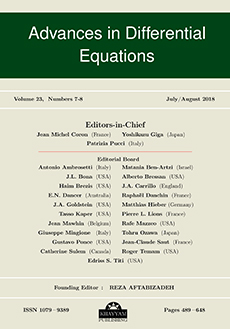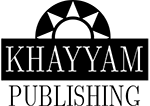Abstract
We consider the semilinear Dirichlet problem \[ \Delta u+kg(u)=\mu _1 {\varphi} _1+\ldots +\mu _n {\varphi} _n+e(x) \; \; \mbox{for $x \in U$}, \; \; u=0 \; \; \mbox{on $\partial U$}, \] where ${\varphi} _k$ is the $k$-th eigenfunction of the Laplacian on $U$ and $e(x) \perp {\varphi} _k$, $k=1, \ldots,n$. We write the solution in the form $u(x)= \sum _{i=1}^n \xi _i {\varphi} _i+U_{\xi } (x)$, with $ U_{\xi } \perp {\varphi} _k$, $k=1, \ldots,n$. Starting with $k=0$, when the problem is linear, we continue the solution in $k$ by keeping $\xi =(\xi _1, \ldots,\xi _n)$ fixed, but allowing $\mu =(\mu _1, \ldots,\mu _n)$ to vary. We then study the map $\xi \rightarrow \mu$, which provides existence and multiplicity results for the above problem.
Citation
Philip Korman. "Curves of equiharmonic solutions and ranges of nonlinear equations." Adv. Differential Equations 14 (9/10) 963 - 984, September/October 2009. https://doi.org/10.57262/ade/1355863336
Information





